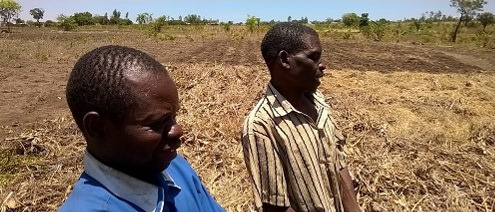
The usual planting season in Southern Africa is from late November to March. Last year the rains did not come until Christmas in many locations. After this late start, the rains came in torrents in early January, causing localized flooding in many parts of Malawi and Mozambique. Then the rains stopped. Although the late season rains allowed some farmers to salvage a small crop, there were areas who suffered almost total crop failure, while others had reduced harvests. This situation has led to food shortages in many parts of Malawi, Mozambique and Zambia. There has also been a drastic increase in the cost of maize (the staple food) across the entire region. This year may be worse.
Last year was not a good year for farmers.
Now we are hearing rumors of the seasonal climatic condition known ironically as El Nino. Current predictions, from several global meteorology departments, indicate that 2015-16 may experience an El Nino event similar in strength to the 1998-99 season that saw unprecedented storms and droughts in the same year. Those of you in Canada may remember the infamous ice storm which was also attributed to El Nino. The following quote from Relief Web serves as a chilling warning about what may transpire this coming growing season. “The next rainfall season (October to April 2016) will take place under a full El Nino influence. Based on current rainfall forecasts and evidence from historical data, unfavorable regional crop production is the most likely scenario. If this is realized, these impacts will take place against a situation of low regional stocks, which underwent a significant depletion in order to cope with the previous season’s crop production shortfall.”
World Renew has been working for several years to reduce people’s vulnerability to such an event. Many of our farmers in Eastern Zambia experienced better than average crops last year due to our eEorts to improve the soil’s water retention through building up organic matter and decreasing tillage. We are also preparing to intervene, if needed, in some of the hardest hit areas with the most vulnerable families. We have already intervened in some hard-hit areas of Zambia. Read the stories below to help you better understand our current work in the region as it impacts the amount of food available and the resilience of rural households.
Blessings,
